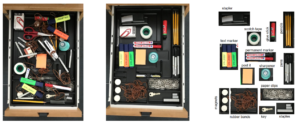This post is also available in:
 Deutsch
Deutsch
A good file organization is a prerequisite to work efficiently with your valuable research data. Moreover, it helps to avoid errors and unnecessary duplications.
As always: early planning matters and saves time, which can be used for the actual research. You should consider several aspects
- Create a hierarchical and logical folder structure or use predefined standards whenever possible – and stick to it.
- Use descriptive file names and avoid special characters.
- Store your data uncompressed in an open, non-proprietary and well-documented format (e.g., CSV for spreadsheets). This ensures that the data remain readable in the future.
- Agree on a file versioning strategy. You can implement a simple version control with a file name suffix convention (e.g., v001, v002 or v1_0, v1_5)
- Do not consider all your data as being self-explanatory. Make sure that you properly document and annotate your data right from the beginning.
- Backup your data! Ensure that the backup processes are working as expected and check periodically if your data are actually restorable from the backups. Follow the 3-2-1 backup rule: keep at least 3 copies on 2 different media and store 1 copy offsite.
Need support? Please contact data@hbz.uzh.ch.
More information: www.data.uzh.ch


